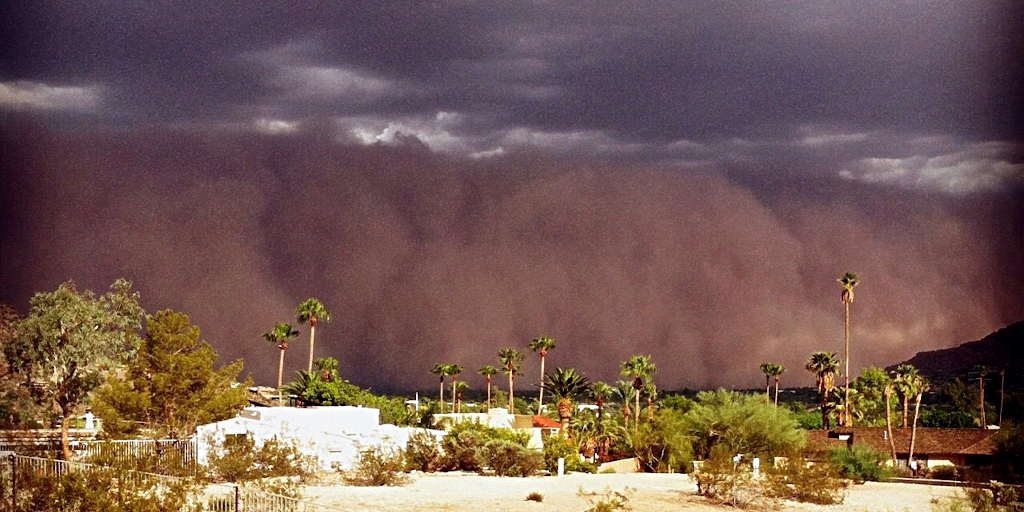On Tuesday, October 29th, 2013, a large dust storm along Interstate 10 near Picacho Peak in Pinal County caused a 19-vehicle pileup that killed 3 people, and injured 12 more.
Arizona residents driving between Phoenix and Tucson on this freeway have seen the barren Sonoran Desert in this area, and know this is the kind of a spot where a killer dust storm could occur.

Most people probably think these storms are completely natural phenomena. But that’s not true. At the Arizona Chapter of the Wildlife Society’s “Wildlife First” symposium to promote public involvement in rangeland issues, held at ASU’s Polytechnic campy in Mesa on October 19th, ASU wildlife biologist David E. Brown explained that central Pinal County was historically covered with annual grasslands. He said these unique desert grasslands were fragile ecosystems that were virtually wiped out by the advent of cattle grazing. The early ranchers, he said, grazed the desert grass until it disappeared. With no protection from wind erosion, the top soil was destroyed, and the land passed over an ecological threshold from which it might be impossible to recover, at least in human time frames. We were left with damaged land that spawns killer dust storms.
This is another example of the ecological holocaust cattle grazing has inflicted upon on the arid lands of Arizona, and the wildlife and people that live there. These types of things should be included in our discussions about the state’s ranching heritage.
Update
On December 5, 2017, the Arizona Department of Transportation (ADOT) announced it was beginning a multimillion dollar project to install a blowing dust alert system along Interstate 10 near Picacho Peak. The land on both sides of that stretch of the freeway are owned by the Arizona State Land Department, which leases the land out for livestock grazing. But ADOT doesn’t plan to buy out the leases in order to retire them.
On June 22, 2020, ADOT announced its new $6.5 million dust storm detection system on I-10 near Picacho Peak was operational.